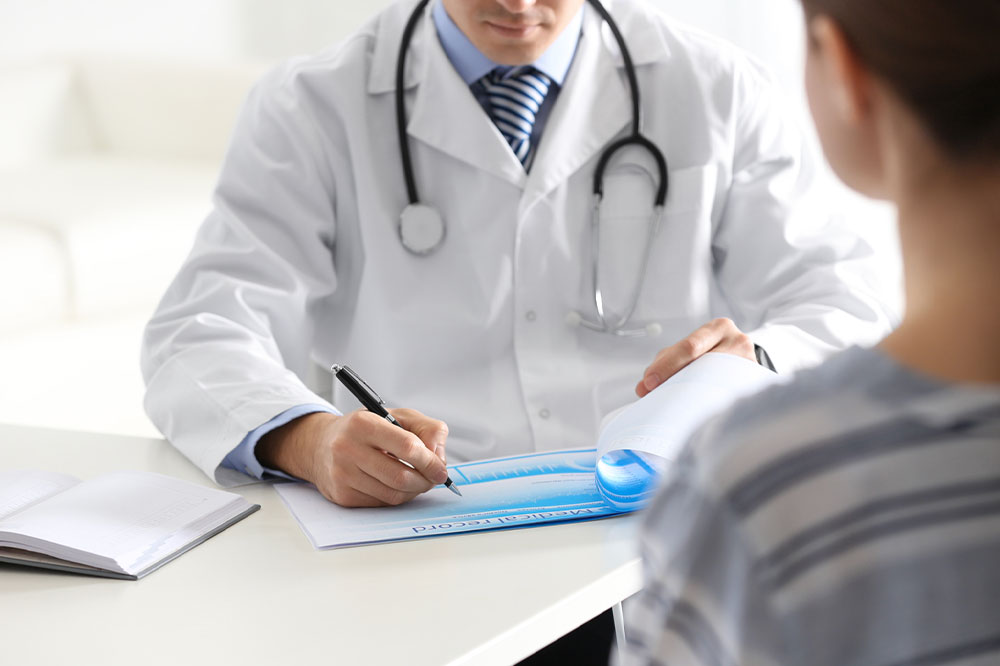
Varicose veins – Symptoms, causes, and management options
Varicose veins, also known as varicosities, are swollen veins close to the skin’s surface. The condition can develop in any part of the body but is usually observed in the legs. Varicosity is caused by weak vein walls and valves, which leads to blood backing up in the blood vessels giving them a bluish-purple or red color. The condition can be immensely painful and can also lead to serious complications if left untreated.
Common symptoms
The most noticeable symptom of this condition is visible blue, purple, or red veins under the skin’s surface. Some of the other symptoms of varicose veins are:
Aching legs
Heaviness and discomfort in the legs
Swollen ankles
Shiny skin and discoloration near the enlarged veins
Sores
Rashes
In severe cases, people might also experience bleeding, persistent swelling, ulcers, and non-healing sores.
Causes
Blood travels in a single direction because of the one-way valves in the veins. Sometimes when the vein walls become less flexible, the valves can grow weaker. This leads to blood flowing backward and accumulating in the vessel, causing it to swell as time passes. Other risk factors are:
Pregnancy: Varicose veins are likely to develop in pregnant women during their third trimester due to the weakening of the walls of blood vessels or valves. The condition may also develop due to hormonal changes and the increasing pressure exerted by the baby.
Menopause: A woman nearing menopause or going through it may suffer from certain health issues like varicose veins and brittle bones. This is brought on by the decreased production of estrogen and progesterone, leading to weaker vein walls and blood accumulation.
Family history: Genes play a major role in increasing the risk of this condition. If one has a family member with varicose veins, it significantly increases the likelihood of inheriting varicose veins. In addition, if both parents are affected by the condition, then one’s chances of experiencing varicose can increase up to 90%.
Additionally, certain unhealthy lifestyle choices can increase the risk of developing the condition.
Treatment options
The condition does not have a permanent cure, but proper treatment can help decrease the discomfort of the patient and even improve the appearance of the affected veins. The course of treatment can vary based on various factors such as age, disease history, overall health, symptoms, and the severity of the condition. The common management options are:
Compression stockings: These stockings are tight around the ankles. They squeeze the veins and do not allow the blood to accumulate in the blood vessels. Wearing compression stockings also reduces swelling and improves the blood flow to the heart. Patients are supposed to wear these stockings regularly to see an improvement in the condition.
Surgery: In severe cases of varicosity, doctors might also suggest surgical procedures such as vein litigation and stripping. Here, the surgeon cuts and removes the varicose veins from the body. Over time, the healthy veins take over and restore normal blood flow to the heart.
Sclerotherapy: The most common treatment option for varicose veins is sclerotherapy in which a solution is injected into the vein. This causes the vein walls to stick together. This can eventually turn the affected blood vessels into scar tissues that fade away.
Food choices
Doctors can usually recommend lifestyle changes to people affected by the condition, as such modifications can lessen the discomfort. This also includes making better food choices to see lasting changes. So, here are some foods to add:
Avocados: Fresh fruits such as avocados are incredibly good for the body. They are rich sources of vitamins C and E, which are known to be beneficial for vein health. In addition, they also contain glutathione which protects the arteries and veins. Avocados can also protect the body from oxidative damage.
Beetroot: Vegetables such as beets are incredibly nutritious. They are rich in a phytochemical compound that lowers the levels of homocysteine (a natural amino acid) in the body. So, opting for vegetables like beetroot can help protect the blood vessels from harm brought on by homocysteine.
Some foods can worsen the symptoms of the condition and should be avoided. Here are a few foods people with varicose veins should avoid:
White bread: White bread is usually made by stripping whole grain flour of essential nutrients, including bioflavonoids and fiber, that are good for vein health.
Cheese: Dairy products like cheese can slow down digestion and cause constipation. This can lead to swelling of the veins around the rectum and increase the risk of varicose veins. Further, such foods can also increase the discomfort of people with the condition.




